
So, you want to write a romance novel.
We don’t blame you! According to Romance Writers of America, the romantic fiction industry is worth over a billion dollars.
Romance makes up nearly a quarter of all published fiction and it outperforms every other genre in sales.

Plus, romance is a fun genre to read and write. Who doesn’t love love?
But writing a love story is easier said than done. Where do you get an idea for a romance novel? How do you ensure that you have a fresh, original take on one of the oldest genres in history?
You’ve come to the right place for your romance novel needs. Today, we’re going to cover where to find romance novel ideas.
How Do You Find a Romance Novel Idea from Fiction?
Orson Scott Card once said, "Everybody walks past a thousand story ideas every day. The good writers are the ones who see five or six of them. Most people don’t see any."
While Card’s quote might be hyperbole, the truth in this quote is that ideas for novels are everywhere around you.
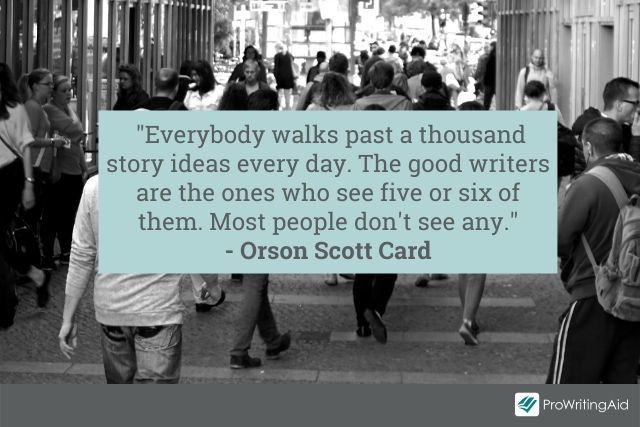
That includes ideas for love stories. But if you’re having trouble seeing romance novel ideas around you, here are a few places you can look.
How to Find Romance Novel Ideas from Fairy Tales
Some stories are so good, they keep getting retold over and over for centuries. And while the originals can be great, a fresh take on a classic story is great fodder for a romance novel.
Fairy tales are some of the most classic love stories, and people never seem to tire of them. There’s a reason there’s a new Cinderella movie every few years!
Some of most commonly reimagined fairy tales are princess stories like Beauty and the Beast, Rapunzel, Sleeping Beauty, and Snow White.
But you can also reimagine other fairy tales. Imagine a modern spin on Princess and the Pea or Hansel and Gretel.
Retellings of fairy tales can be engaging for readers who want a fresh take. How can you reimagine a fairy tale? First, you could change the setting.
How would Snow White work in modern-day England? Or perhaps you could set a Rapunzel-inspired story in 1950s suburban America.
Princess and the Pea might be interesting to set in imperial China. Sarah J. Maas set a Beauty and the Beast retelling in a fantasy world full of Fae.
You can also change the characters. Flip the gender roles in a fairy tale.
The Beast could be cruel, rich woman à la Meryl Streep in The Devil Wears Prada. Fairy tales are also a great basis for queer fiction.
You can change the characters in other ways, too. Prince Charming doesn’t have to be a prince. He can be a CEO or a movie star or anything you want him to be.
Finally, you can reimagine fairy tales by changing their ending. What if Sleeping Beauty is actually in love with Maleficent? What if the princess falls in love with the genie?
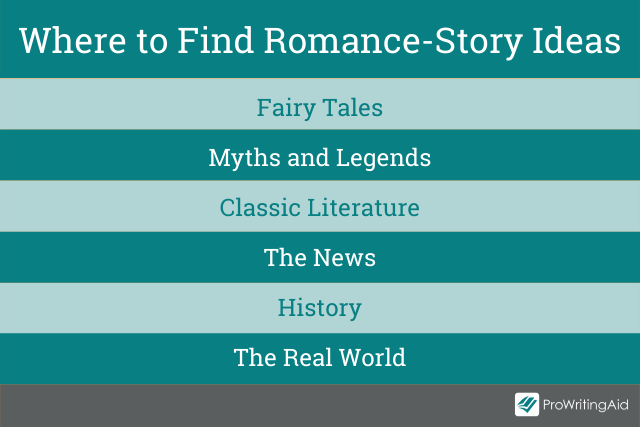
How Myths and Legends Can Inspire a Romance Novel
Like fairy tales, myths and legends stand the test of time. They can also form the basis of your romance novel with a little imagination. Much of mythology reads like ancient, magical soap operas, especially Greek mythology.
You can take the same approach as with fairy tales, by changing characters, setting, or the ending to make your romance novel feel new and fresh. However, changing settings and characters might not work as well, depending on the legend.
For example, the love between Helen of Troy and Paris might not be recognizable in a modern-day setting. No government would let a country go to war over a kidnapped wife. Instead, it’s a chance to reimagine the plot of the story. Maybe Helen and Paris hate each other, but they hate the Mycenaeans more. Now you have an enemies-to-lovers story.
Arthurian legends are romantic in and of themselves. Lancelot and Guinevere are one of the original pairs of star-crossed lovers. But they aren’t the only love story you can create. Write about Morgan La Fey and Merlin, or give Arthur a love story post-Guinevere.
Find Inspiration for Your Romance Novel in Classic Literature
Once literature is in the public domain, or no longer subject to copyright, it’s ripe for the picking. There are some amazing reimaginings of classic love stories.
You can use the same questions to put a new spin on classic tales from literature.
For example, Bridget Jones’ Diary is a retelling of Pride and Prejudice.
Modernizing classics is powerful because it can bring new dimensions to well-known characters that readers already love.
Jane Austen stories are common inspiration for romance novels. There have also been countless retellings of Shakespeare’s Romeo and Juliet.
Dust off those old books from your school days and find some inspiration for your love story.
Just be sure to toe the line between inspiration and plagiarism carefully. ProWritingAid’s Plagiarism Report can help you with that.
As you can see in the example below, I have noted the source of the quote so it would not count as plagiarism.
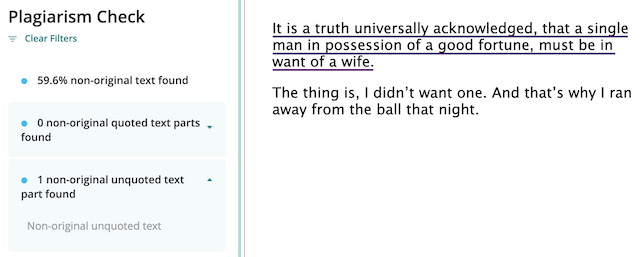
Find out more about ProWritingAid’s plagiarism checker bundles.
Where Can You Find Inspiration for a Romance Novel in the Real World?
How the News Can Inspire a Love Story
Do you ever read a news story about an older couple and think, "That sounds like a romance novel?"
There are plenty of story ideas you can find by reading the news.
News events can provide a backdrop for your romance plot. Two lovers on opposite sides of a war. Lovers who meet in a natural disaster.
And I’m sure we’ll have a rise in pandemic quarantine romance novels soon! It’s the perfect opportunity for beloved tropes like forced proximity, hurt/comfort, and girl/boy next door.
History Can Inspire a Romance Story
Like the news, history has ample fuel for romance novels. Many historical romance authors become obsessed with a specific era, location, or event.
Perhaps you love learning about the French Resistance in World War II. Maybe you’re fascinated by the West African kingdom of Mansa Musa.
There are thousands of years of history—and even more of prehistory—to inspire your next love story. A great pre-historic romance novel to check out is Clan of the Cave Bear by Jean Auel.
Readers love the immersive, rich backgrounds that historical settings can provide.
It’s fascinating to read about lovers from the past because it connects us to a time long gone. Historical fiction is the closest we can get to time travel.
Find Inspiration for Love Stories in the Real World
A friend of mine told me the most amazing story about how her grandparents met. Her grandfather threw a letter off the train on his way to war. Her grandmother found the letter and wrote to him. The rest is history.
Another example happened recently. I saw a trailer for a movie that sounded extremely familiar. I realized it was based on a crazy Twitter thread that had gone viral. It wasn’t romance, but this story still inspired a movie.
Listen to people’s stories. Go people-watching. Scroll social media (that one should be easy!) Just remember to follow a few ethical guidelines when using any real inspiration for your romance novel:
- Take only bits and pieces, not the whole story. Don’t just write a true story and call it fiction. Use details about people, places, or events but include plenty of fictional elements.
- Get permission to tell the story if it isn’t yours. If the people (or their families) involved in the story that inspires you, ask them if you can use their story. Not everyone wants to be memorialized in fiction.
- Change names, locations, and events as necessary. You don’t want to draw unwanted attention to people or places and accidentally cause harm.
What’s a Good Plot for a Romance Story?
With all those ways to find ideas for your romance novel, there’s no shortage of plot ideas! But how do you make sure your love story’s plot is good?
Romance isn’t easy to write. It requires a balance between the familiar plots and tropes that readers love and a fresh spin on those old, tired storylines.
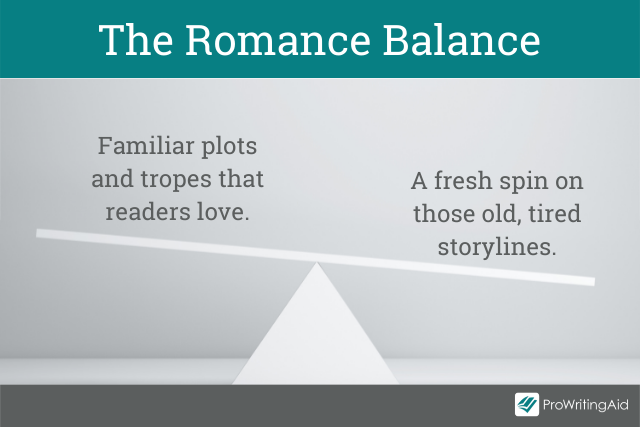
To create a good plot for a romance novel, look at some familiar plot structures, like enemies to lovers, secret royal, or arranged marriage stories.
Read plenty of romance and find themes, plot points, and tropes that are repeated frequently. Then ask yourself: how can I put a new spin on this?
For example, let’s say you are writing a classic millionaire or billionaire romance. More often than not, these books feature a very wealthy man who is playboy and doesn’t want to settle down. In romance, we call these Casanovas "rakes." You could freshen this trope by making the commitment-phobic rake the heroine.
Likewise, grumpy/sunshine romances usually make the hero the grumpy one. Reverse the genders and make your hero the sunshine!
What Is the Best Way to Write Romantic Development in a Story?
The idea of mutual love at first sight might sound romantic, but it doesn’t make for an interesting romance novel.
Romantic development is a crucial component to keeping your readers engaged. We don’t want the happy ending by the end of chapter one!
After your characters meet, they must interact several more times before they get together and are torn apart.
A good rule of thumb is a minimum of three interactions, with each resulting in more attraction, before they decide they want to be together.
Here are some ideas for ways your love interests can interact in order to fall in love.
- Accidentally running into each other
- Must work or travel together for a common reason
- Friends force them together at an event
- They are put in danger together
- One is upset, and the other comforts them
- Email/text/letter exchanges
Build tension in these with romantic dialogue, accidental touches, awkward moments, and internal monologues.
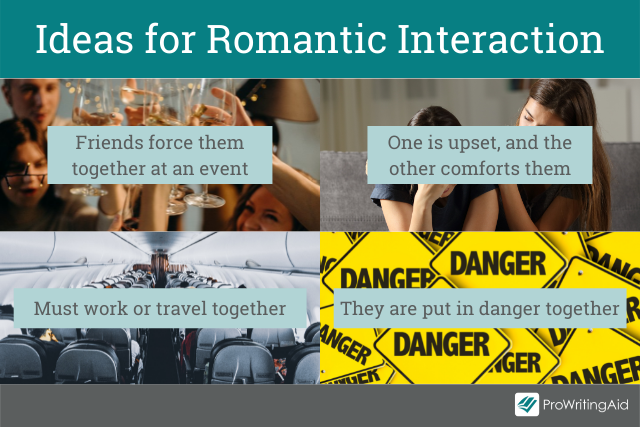
Of course, if you only write the meet cute, three romantic interactions, a scene where they get together, tearing them apart, and the reunion, that’s a very short novel!
Most likely, your characters will have several scenes apart, as well. So, how can you build romantic tension when they are apart?
Internal monologues are a great way to build romantic tension. They need to think about their love interest more and more frequently.
They also need to debate with themselves why they cannot be together. What is keeping them apart?
Maybe it’s a forbidden love or maybe they’re convinced the other person isn’t interested. Explore conflict through your characters’ eyes.

Don’t make it easy on them. Have some interactions be messy and end poorly. Add some resistance and heartbreak, like one person not showing up or expressing attraction to another character.
External factors that keep them from pursuing love are also important. Is someone keeping them apart? Is there an event that will separate them by distance?
What Are the Most Cliché Romance Story Plots?
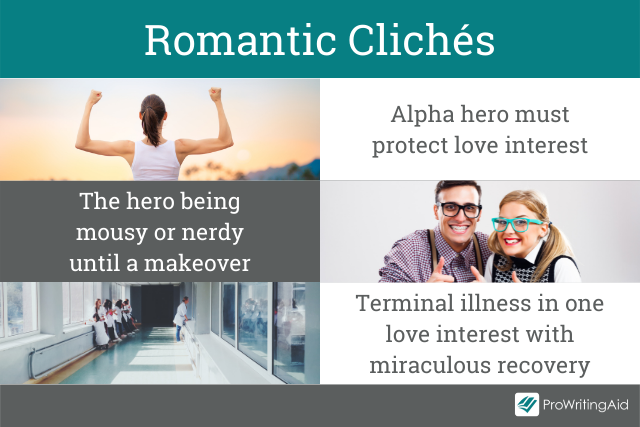
Clichés are plot elements that have been overdone. Romance readers want their stories to follow a formula, and they keep returning to the same types of romances over and over again.
This makes it much harder to avoid a cliché plot. Readers love these clichés as long as they have a fresh, updated take.
Some of the most cliché plots include:
- A playboy falling for a straight-laced girl
- The hero being mousy or nerdy until a makeover
- Alpha hero must protect love interest
- They come from different worlds (rich/poor, royal/commoner, jock/nerd)
- The Mary Sue: bookish girl doesn’t know she’s beautiful
- Love triangle
- Terminal illness in one love interest with miraculous recovery
- Love at first sight
Don’t think of clichés as a bad word, however! People still love these stories. If you want to write one, ask yourself how you can provide a new take.
How Do I Start Writing a Romance Novel?
Once you have an idea, the work is just beginning. It’s time to put pen to paper and create your story. What do you need to start writing your romance novel?
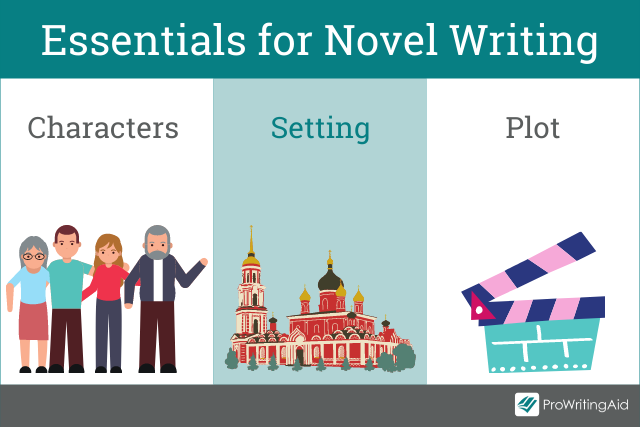
First, you need characters. Who are your love interests? What are they like? Figure out their personalities and backstories.
You also need a setting. Consider the time and location. It can be set in the real world or a fictional place.
It can take place in the past, present, or future. Make sure your characters fit the setting. You can’t have a computer programmer in Regency era England.
Finally, pick a romance plot structure. This will guide your characters’ interactions and relationship throughout your novel.
Here are a few common romance plot tropes.
- Secret billionaire
- Enemies to lovers
- Friends to lovers
- Second chance
- Grumpy/sunshine
- Forced proximity
- Fake relationship
- Royal/commoner
- Forbidden love
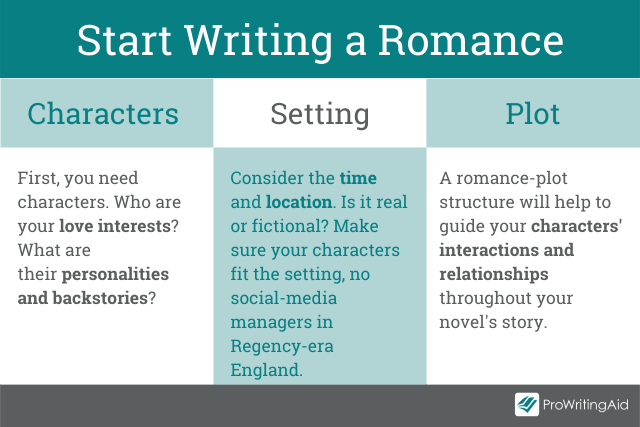
Now you’ve got the basics for writing your romance novel. Take a look around you for inspiration, and get to work on that happily ever after.

